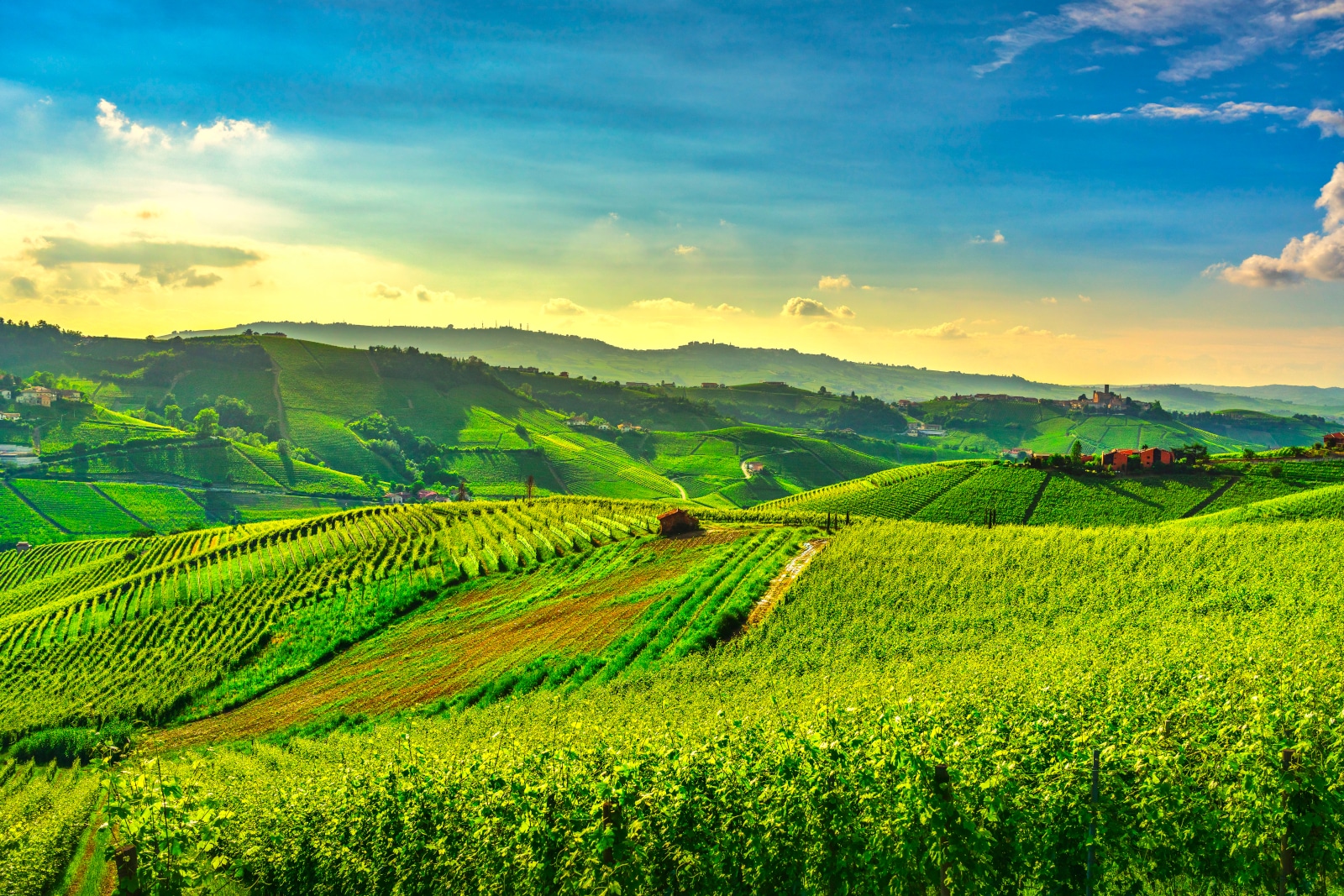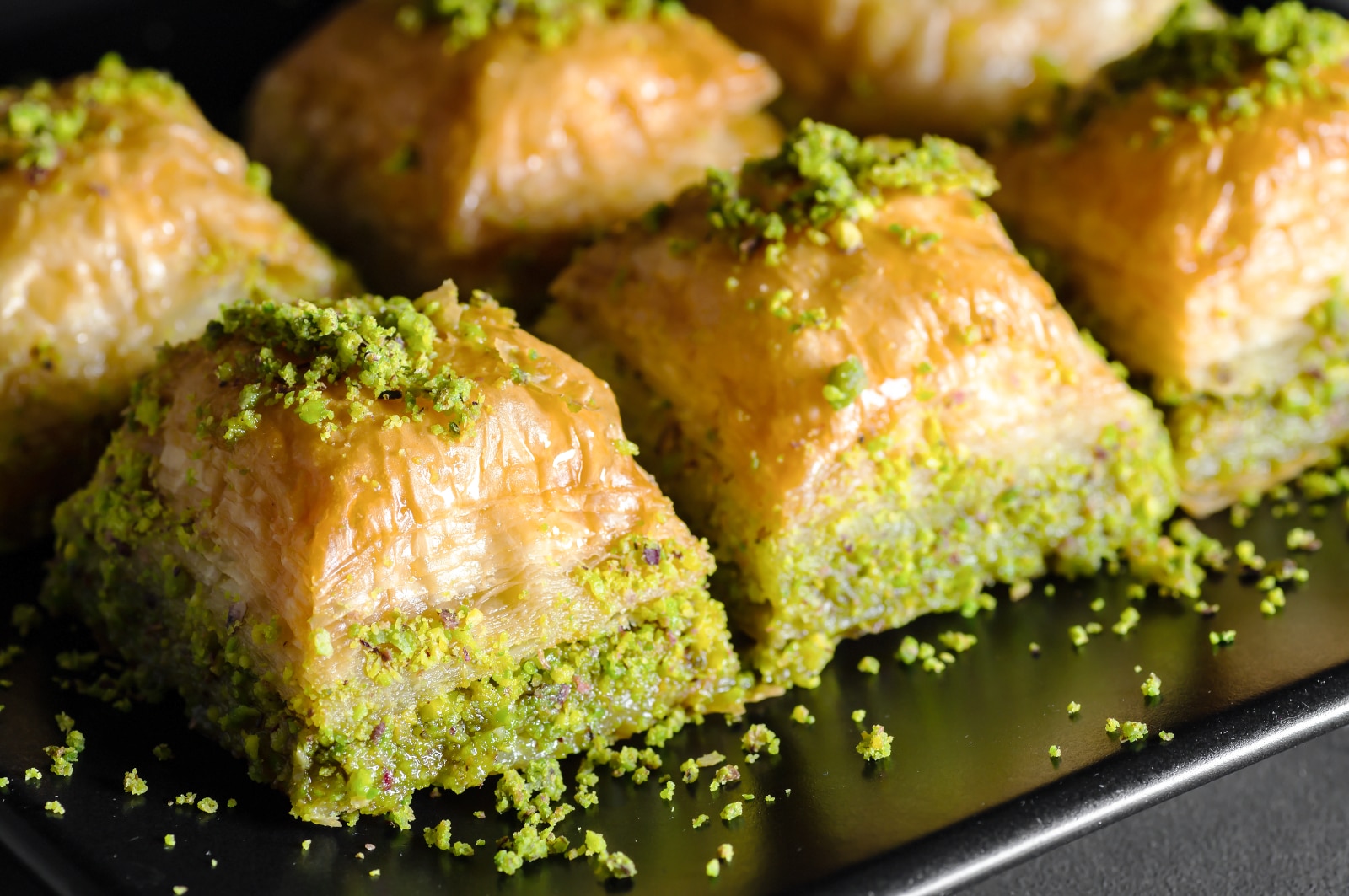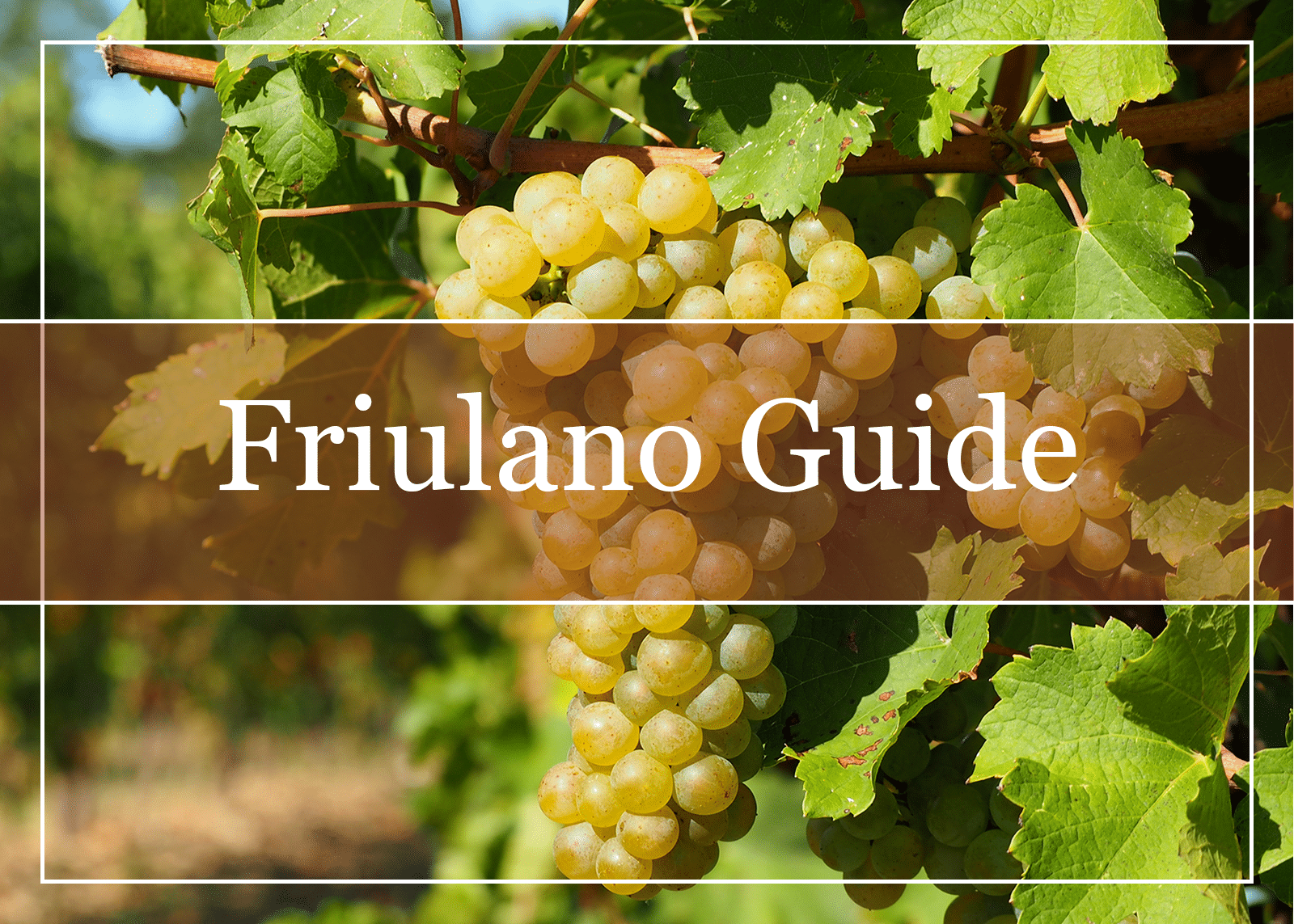What Is Muscat?
Muscat, also known as Muscato in Italy and Greece, or Moscate in Spain and Portugal, is an ancient grape varietal. Being one of the oldest and most widespread varieties, Muscat has been cultivated for at least a thousand years. In fact, the Muscat grapes of today originated in the Middle East and have been used to produce wine since the times of Ancient Greece.
Generally, Muscat thrives in warm temperatures, so the Mediterranean climate is ideal. Therefore, it is no surprise that the best Muscat examples are be found in Italy, France, Spain, Greece, and Australia—most of which are predominantly hot countries.
Muscat characteristics are highlighted by distinctive grapey notes and the wine’s versatility. This makes Muscat an attractive varietal for winemakers, as they can shape it in the winery in any way they desire. Muscat can be produced in a range of styles, bone-dry, medium, sweet, or as a sparkling wine. Additionally, if the Muscat grapes are picked very late in the season when the sun has ripened them, they give a luscious late-harvest dessert wine.
Also this grape produces table wines across the world or it is used as a white blender to add perfumed aromas in various blends. Fortified Muscat is common, too, due to Muscat’s low acidity.
What Color Is Muscat?
With over 200 grape varietals belonging to the same Vitis vinifera species, the Muscat grapes do not just have one universal color. On the contrary, they range from whitish with green reflections (Muscat Ottonel), through shiny yellow with red tones and bright plum-like purple-red (Muscato Rosa), to deep black-purple with green hues (Muscat Hamburg).
Until ‘véraison’ and berry ripening, every Muscat variety is hard and thick to the touch. The ‘véraison’ period, signals the point at which the grapes begin to ripen. At this point, the grape’s skin changes tone, with the Muscat color becoming translucent and golden.
Between ‘véraison’ and harvest, grapes swell and fill with water. During ripening, sugar levels rise, and acid levels drop. Color pigments and flavor components accumulate. Warm and sunny conditions are ideal, while mild water stress inhibits soot growth, encouraging grape ripening. It is then that Muscat develops the assortment of hues mentioned above, dependent on the varietal. In every case, walking through a Muscat vineyard is a one-of-a-kind experience, as the grapes are always bright and shiny, no matter if they are white, yellow, pink, or black.
What Does Muscat Mean?
The origins of Muscat are challenging to pinpoint, as there are several theories about the origins of the Muscat name. The most common one suggests that Muscat derives from the Persian word ‘muchk’. Similarly, in Greek, Muscat is translated as ‘moskos’ meaning a sweet-smelling aroma, Latin ‘muscus’ (moss), and French ‘musc’ (an intense smell). In Italy, there is the Italian word ‘mosca’ that means a fly. It could be related to Muscat because the Muscat grapes have a sweet aroma and very high sugar levels, so they attract fruit flies.
Different theories place the origins of Muscat in Oman and that it took its name from the city Muscat, located on the coast of the Gulf of Oman. Another theory suggests Muscat was named after the Greek Moschato city, located in Attica, Southwest of the capital Athens. This may have some, Moschato is a common synonym in Greece for dessert wines made from Muscat.
How to Pronounce Muscat?
Muscat pronunciation is simple and straightforward. That said, learning how to pronounce the grape correctly could save you from embarrassing situations when you visit a wine bar with friends and have to demonstrate your wine expertise. Further, there are many helpful audio and video examples online on how to pronounce Muscat. Be sure to check them out. There only two syllables in the word, and the emphasis falls on the first syllable. Here what it looks like phonetically:
muh-skat
Where Does Muscat Come From?
Muscat is considered one of the oldest grape varietals and has been grown extensively for hundreds of years. As it favors warm climates, it comes as no surprise that it thrives in countries with a Mediterranean climate, such as Italy, Greece, Spain, Portugal, the Southern of France, and Rutherglen in Australia.
With over 200 Muscat varieties, the grape has a lengthy history of mutations, synonyms, and crossings. As such, wine fans should not expect to find one universal Muscat grape. But several different grape types with distinctive character and regional nuance. Muscat Blanc à Petits Grains could be the oldest and most valued Muscat example. It is a sweet white Muscat made in Piemonte in Northwest Italy using the Asti Method. It shows a pronounced peach and grape aroma overlaid with floral notes.

Also known by the more popular label of Moscato d’Asti, Muscat Blanc à Petits Grains is produced in France in the prestigious appellations of Muscat de Beaumes de Venise, Clairette de Die, and Muscat de Lunel. Muscato Bianco examples, usually of high quality, can be also be traced in Wachau, the most renowned winemaking region in Austria, for excellent dry wines made from Grüner Veltliner or Riesling.
Outside Europe, Muscat plantings are found in South Africa. There, the grape is called Muscat de Frontignan. It is used to produce the highly acclaimed ‘Vin de Constance’ wines of Constantia, which were popular among European royals in the 19th century. The modern recreations of ‘Vin de Constance’ are considered some of the world’s greatest dessert wines.
Some other notable Muscat wine examples consist of Muscat of Alexandria. It is the second-oldest family member of the Muscat species and is renowned for giving fruity and light, refreshing white wines. Two other fascinating branches of the Muscat family are Muscat Ottonel, which is extra pale and early-ripening, and Muscat of Hamburg, a black varietal which is used to produce easy-going table wines. Moscato Rosa and Moscato Giallo originate in Northern Italy and make both dry and sweet wines. They are named after the color of their fruit, pink and yellow, respectively.
Simply for clarification, the French Muscardin, Muscadelle, and Muscadet do not relate to the Muscat grape species.
What Kind of Wine Is Muscat?
Muscat wines are challenging to pin down to a generic black-and-white profile. There are so many variations of them. From dry to medium to sweet or sparkling wines, Muscat produces every style of wine imaginable. That said, the Muscat fruit gives wines which have, relatively muted acidity, nonexistent tannins, and low alcohol levels. Syrupy and honeyed, Muscat has a golden sweetness that is mouthwatering and fulfilling.
Muscat can be sipped with extra sweet desserts, poolside, or on cold weather conditions, when you need something to warm you up but also to offer you a sweet, mellow sensation.
It is complex and is nearly always served very chilled, in a similar fashion to Champagne.
Is Muscat Dry or Sweet?
As mentioned before, a Muscat wine can range from dry to medium to sweet to lusciously sweet. The Muscat flavors depend on the type of Muscat grape and the winemaker’s skill. The position of the vineyards is also pivotal in determining the quality and the juiciness of Muscat wines. Muscat can be highly flavorsome and complicated. It usually tends toward the lower side of acidity and alcohol levels.
What Does Muscat Taste Like?
Even though the Muscat varietal is used to produce every wine style imaginable, some characteristics are common among Muscat wines. The Muscat aroma, for example, is almost always grapey with floral notes of orange blossom and honeysuckle. Mandarin orange and Meyer lemon perfumes are also commonly found on the nose.
Furthermore, on the palate, the Muscat taste is tender, sweet, and often overripe. Wine enthusiasts may feel the occasional apple or pear or some subtle lime touches, but the dominant flavors are honey, peach, apricot, and mango.
The acidity is usually not very high, so Muscat wines are not super refreshing. The finish is creamy with a honey-glazed texture and tones of nuts, such as hazelnut and almond.
Muscat tasting notes might not be for everyone, therefore. Muscat is syrupy, and that may taste great to some. Others, however, might get overwhelmed by the intense sweetness. Even so, no one can deny that the Muscat flavor profile is deeply complicated, mouthwatering, and luscious. It is distinctive and a prime example of how complex a grape varietal can be.
How to Serve Muscat?
Muscat is best served chilled, whether it is young or has bottle-aged. The mellow grapey flavors are fantastic for those moments when you need to taste something sweet and nectar-like. The wine definitely speaks for itself, so do your best to be creative when serving it. But remember to chill it well first!
Muscat has to be served chilled. The perfect temperature to serve Muscat is 45-55°F (7-10°C). By doing so, you enhance the flavors of the wine, and the intense sweetness subsides, too. On top of that, do pour the wine into regular medium-sized white wine glasses. There is no reason to purchase any specific wine glass type, such as an aroma collector glass. Decanting is not an option, as it will not help the wine release additional aromas and flavors.
To keep Muscat refreshing and crispy, you must ensure that it stays cool during serving. To do this, use an ice bucket or wine cooler. The bucket should be filled three-quarters full with equal quantities of ice and water so that iced water surrounds the bottle. Then, the water can transfer the heat from the bottle to melt the ice. Air acts as an insulator, and the bottle chills. That said, be careful and do not over-chill the wine. Otherwise, the flavors of Muscat become thin, almost empty.
Perfect for Bottle-Aging
Muscat is one of those wines that benefit from long-term storage. You can place Muscat in a cellar and leave it for three to five years. On that note, if you are privileged to own a fortified Muscat, the maturation period can extend up to twenty years! It may sound extreme, but it is not. Fortified Muscats are notoriously known for their high alcohol and high residual sugar levels, so they are perfect for maturing for over two decades.
Maturing a Muscat is no different than aging any other kind of wine. The wine should be sealed with a cork and stored in an environment with room temperatures that do not fluctuate (50-60°F or 10-15°C) and a portion of humidity.
Direct sunlight or artificial light should be kept at bay, as they may cause irreversible damage. Intense exposure to light rearranges the chemical makeup of wine, changes to oxygen and temperature can cause wine faults. That means that the wine ages prematurely, and its aromas, flavors, and even color change for the worse. The resulting wine is known as light-struck.
Odors also must be avoided, as they might find their way inside the bottle. If they do, they usually instill unwelcome aromas and flavors, like intense animal sweat or vinegar.
Bottle-aged Muscats develop aromas and flavors of marmalade, dried banana, dried apricot, petrol, nutmeg, mushroom, and cinnamon spice.
How Long Should Muscat Breathe?
Considering that Muscat wine is such a heavyweight, it may come as a surprise that it doesn’t require additional aeration before serving. As mentioned above, Muscat does not require decanting. That said if you fancy pouring into a crystal decanter to present it to your friends, feel free to do so. A bit of extra air will not harm it. On the contrary, as a general rule, every type of wine can be decanted, whether white or red, bone-dry, or lusciously sweet. If you are decanting your Muscat, give it about 15 minutes to breathe before serving.
What Food to Pair with Muscat?
Muscat food pairing is not difficult as long as you stick to some simple rules. With sweet Muscats, you have to balance out their mellowness with food of similar sweetness. For dry examples, pair the wine with fresh fruit, salads, or sushi. Fortified Muscats, though, combine divinely with soft cheeses that show intense nuttiness.
For starters, try to serve dry Moscato fresh salads and grilled seafood. In fact, both of these food choices work well for an early dinner or a late lunch. On top of that, Muscat can stand up to spicy courses, and consequently, it is not rare to see it paired with Indian dishes or Asian fare due to its sweet, floral fragrances.
But where Muscat shines is when paired with desserts – it is a simply superb dessert wine. Serve it together with vanilla or caramel ice cream, baked apple pie, baklava, or Greek syrupy orange pie. Tiramisù and Bônet are also fantastic choices to pair with a Muscat. Chocolate, cherries, and dried raspberries make delightful combinations with the wine, too. As such, no matter what your indulgence is, Muscat has the sweetness to enhance your sweet tooth.

Muscat Cheese Pairing
An assortment of Brie, Camembert, Comté, Bleu d’Auvergn, and Roquefort are the ideal cheese partners for fortified Muscats. They bring out the apple and subtle citrus flavors of Muscats, as well as their nutty personality. The cheese could form part of dishes such as pasta and pizza or shredded in salads. Muscat can also be served with hard cheeses, such as Grana Padano, Gruyere, or Pecorino.
How Much Alcohol Does Muscat Have?
Muscat alcohol content ranges from 8 to 11% ABV. However, in fortified Muscats, the alcohol content ranges from 15 to 18.5% or more ABV. So, that is something to have in mind when checking the label on a bottle. Remember, also, to enjoy the wine responsibly.
How Many Calories Are There in Muscat?
Alcohol and sugar are responsible for increasing the calories in wines and liquors. The carbs in Muscat are 4 to 9 or more per glass, while the calories are 121 to 129. As expected, therefore, Muscat is not for consumers on a diet. In fact, this wine must be avoided by people looking to monitor their calorie intake.
Conclusion
Muscat is a grape varietal with a history as ancient as grape growing and winemaking itself. Apart from being known for producing sweet wines, it is also famous for being uncommonly complicated. A high-quality Muscat can even compete with some of the best Riesling examples or a complex white Rhône blend.
The good thing about Muscat is that it is approachable. Every wine enthusiast can enjoy it if they have a sweet tooth. I would recommend consumers to try the wine at least once, especially after a mouthful of a Middle Eastern or Greek syrupy dessert.







